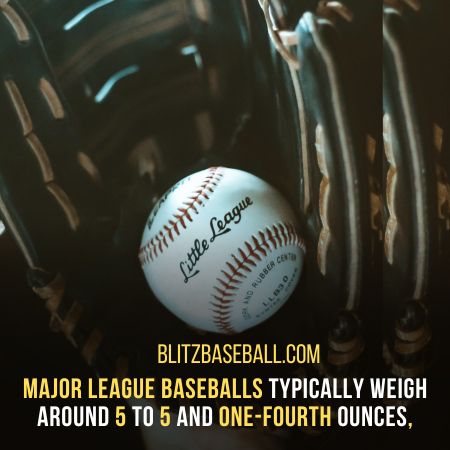Baseball, a beloved sport that has captured the hearts of millions, has seen its fair share of changes over the years. One aspect that has evolved is the weight of the baseball itself.
In this article, we will delve into the fascinating world of how much does a baseball weigh, exploring its evolution, design, manufacturing process, and different types and materials used.
Throughout history, different eras have brought about varying criteria for baseball weight and design.
From the flexible standards of the Dead Ball Era to the introduction of Australian wool in the Live Ball Era, and the stability provided by cork core and rubber mixture in the Modern Era, baseball weight has continuously adapted to the needs and preferences of the game.
Notably, the weight of a baseball is not uniform across all types and leagues. Major League Baseballs typically weigh around 5 to 5 and one-fourth ounces, while Little League Baseballs range from 4 to 5 ounces.
Furthermore, different materials used in manufacturing, such as rubber and artificial leather, result in variations in weight.
Join us as we explore the captivating world of baseball weight, uncovering interesting facts and trivia along the way. Whether you’re a die-hard baseball fan or simply curious about the sport, this article will provide you with a comprehensive understanding of how much a baseball truly weighs.
Key Takeaways
- Baseball weight has evolved over time with different eras.
- The average baseball weight is around 5 to 5 and one-fourth ounce.
- Different types of baseballs have different weights due to manufacturing materials.
- Soft baseballs, commonly used in high school baseball games, weigh around 140-150 grams.
Baseball Weight Evolution: How Much Does A Baseball Weigh?

The evolution of baseball weight over time can be observed through different eras, such as the Dead Ball Era, Live Ball Era, World War II Era, and Modern Era, each introducing various changes in weight and design criteria.
During the Dead Ball Era, which spanned from the late 19th century to the early 20th century, there were flexible criteria for baseball weight and design.
In the Live Ball Era, which began in the 1920s, a new design was introduced using Australian wool, resulting in a more lively and consistent ball.
The World War II Era did not see significant changes in baseball weight, as the focus was on supporting the war effort.
In the Modern Era, which began in the mid-20th century, baseballs started using a cork core and rubber mixture for stability.
These evolutionary changes in baseball weight have had an impact on gameplay, affecting factors such as pitching, hitting, and overall game strategy.
Design and Manufacturing
Design and manufacturing processes play a crucial role in determining the weight of a baseball. The process of manufacturing baseballs and the impact of design on performance are important factors to consider.
Modern baseballs are made using synthetic materials, which have replaced traditional materials like horsehide. The use of synthetic materials in modern baseball production allows for greater consistency in weight and performance. The design of a baseball, such as the number of stitches and the type of core used, also affects its weight.
The cork core and rubber mixture used in modern baseballs provide stability and contribute to the desired weight. Overall, the design and manufacturing processes of baseballs are carefully crafted to ensure that the weight meets the standard requirements and enhances the performance of the players.

Different Types and Materials
Different types of baseballs vary in weight due to the materials used in their manufacturing process. The weight of a baseball can have an impact on gameplay, as it can affect how far the ball travels when hit and how it behaves when thrown or pitched.
Cultural differences and preferences also play a role in the choice of baseball materials and weight. For example, in Japan, rubber baseballs are popular, and red rubber baseballs and synthetic rubber baseballs are commonly used. These variations in weight and materials can create different playing experiences and strategies.
It is important for players and teams to consider these factors when selecting baseballs for different games or leagues. By understanding the different types and materials of baseballs, players can make informed decisions that enhance their gameplay.
Interesting Facts and Trivia
Interesting facts and trivia about baseball can provide valuable insights into the history and cultural significance of the sport. Here are three intriguing facts about baseballs:
Pros and cons of using rubber baseballs:
- Rubber baseballs weigh less than ordinary baseballs, making them easier to throw and catch.
- Rubber baseballs are popular in Japan, where red rubber baseballs and synthetic rubber baseballs are commonly used.
- Soft baseballs, made with artificial leather, are commonly used in high school baseball games, as they offer a safer option for players.
Impact of baseball weight on pitching performance:
- The weight of a baseball can significantly affect a pitcher’s performance, as it influences the ball’s trajectory and movement.
- Pitchers often prefer baseballs with a slightly heavier weight, as it allows them to generate more velocity and control.
- However, the weight of a baseball should be within the regulations set by the league to maintain fairness and consistency in the game.

By understanding these facts, players, and fans can gain a deeper appreciation for the nuances of baseball and its equipment.
